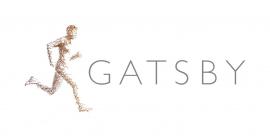Hidden Gems - Practical Chemistry
We've scoured the eLibrary for some favourite chemistry demonstrations and practicals to enthuse and amaze students. They are curriculum linked to areas such as rates of reaction, combustion, decomposition, redox reactions, fuels, chemiluminescence and properties of materials.
Visit the practical work page to access all resources and lists focussing on practical work in secondary science: www.nationalstemcentre.org.uk/sciencepracticals
Chip Pan Fire
Here's a dramatic demonstration of how not to put out a chip pan fire!
As well as the obvious message about fire safety in the home, this demonstration fits well into areas of the curriculum such as combustion, fuels and rates of reaction. In the case of the latter, the fireball is an example of how increasing the exposed surface area of a fuel in air increases its burn rate.
Lycopodium Powder
This is another great demonstration of how a large surface area can increase the rate of reaction. Using a finely divided carbohydrate powder, a large fireball is created when it is tipped into a flame. Be sure not to do this under the projector!
The Pulsing Reaction
A favourite demonstration of a chemical reaction that will amaze students, and it's surprisingly easy to carry out! Having mixed the chemicals together and given it a good stir to create a vortex, the colourless solution slowly turns amber and then suddenly turns a very dark blue colour. This slowly fades back to a colourless solution and the process repeats. What's not to like?
Glowsticks
A visually impressive demonstration using the hydrogen peroxide and oxylate esters inside glowsticks to show chemiluminescence, energy changes and rates of reaction.
You can use this for an unusual demonstration of how concentration affects rate of reaction.
Go with the Flow: Investigating Bouncy Fluids and Other Strange Materials
This booklet is full of ideas for investigating the properties of some unusual materials - mostly polymers such as slime, liquid and solid polymorph, silicone gum and putty.
The resource also looks at ferrofuid. This is a novel and exciting material for pupils to see and to explore. There are perhaps fewer links to the science curriculum than for the other materials described in this booklet, though there are certainly possibilities for using Ferrofluid effectively in areas like magnets and magnetic fields, electromagnets and electromagnetic effects.
Lilac Fire
A demonstration of a redox reaction. The reaction causes a lilac flame, which is best viewed in a darkened room. Mixing glycerol with potassium permanganate (VII) starts an exothermic reaction which oxidises the glycerol to from carbon dioxide and water (hence the steam) and it is itself then reduced.
Demonstrating Chemistry: Top of the Flops
This is great resource for those who are a lttle nervous about carrying out some of the trickier chemistry demonstrations.
Expert chemists Dr Colin Osborne from the Royal Society of Chemistry, and Dr Kay Stephenson and Bob Worley from CLEAPSS explain why some demonstrations tend to go wrong and give tips about how to make them a success!
Demonstrating Chemistry: Fireworks in the Classroom
Teachers might like to base their teaching of chemical reactions at Key Stage Three around the topic of fireworks, as it is likely to generate considerable interest and enthusiasm from the students.
Matthew Tosh shows us some demonstrations and experiemnts which can easily be carried out in the classroom using fireworks as the context. Reactions include combustion basics, oxidation and oxidising agents, creating a flash and displacement reactions.




